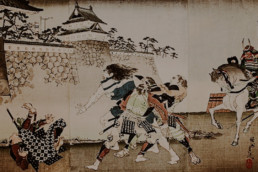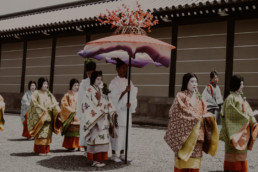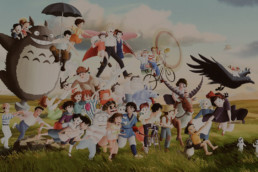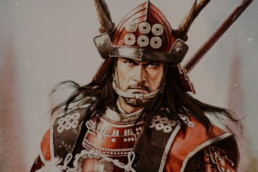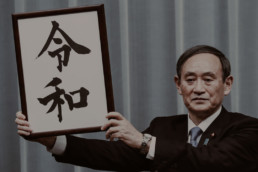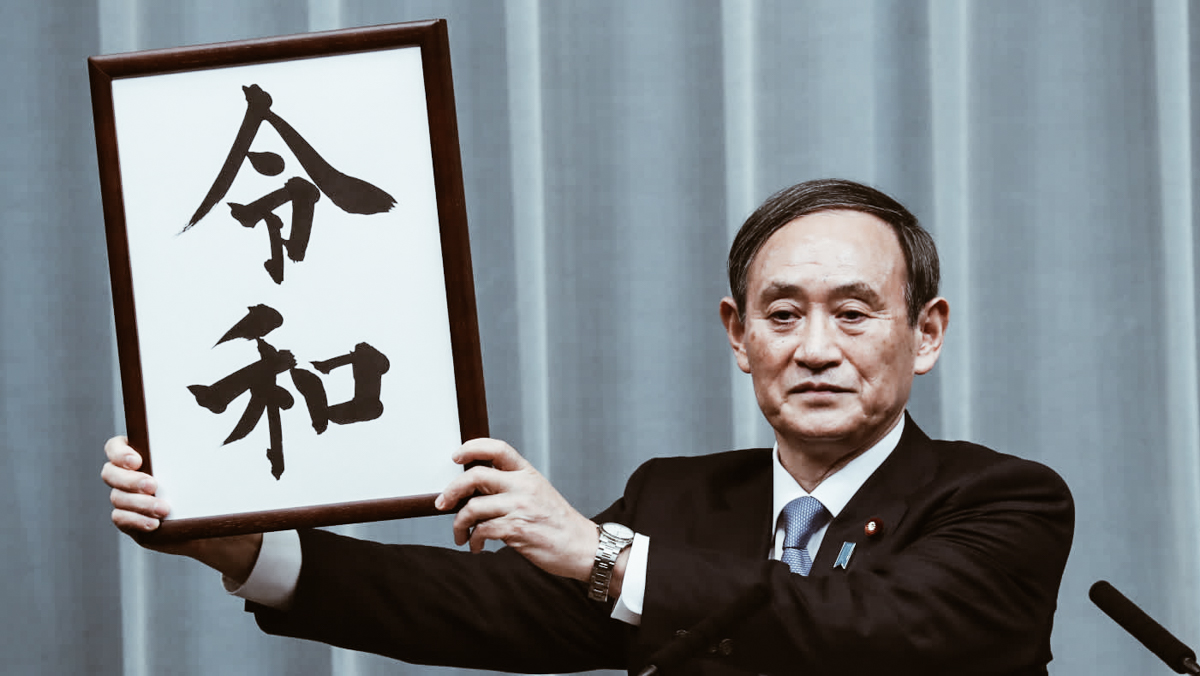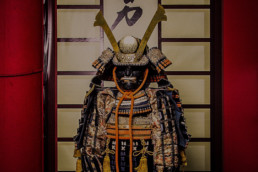Japan History: Torii Suneemon

photo credits: japanworld.info
Torii Suneemon (1540 - 1575) was a Japanese samurai of the Torii family, known for his courage and for the incredible value demonstrated in the battle of Nagashino (1575). Of his youth, it is known that he was an ashigaru soldier who served Okudaira Sadamasa, a vassal of Tokugawa Ieyasu and master of the castle of Nagashino.
On June 17, 1575, after failing to capture Yoshida Castle in Toyohashi, 15,000 of Takeda Katsuyori's samurai attacked Nagashino Castle in modern Shinshiro City, Aichi Prefecture. Nagashino with only 500 men, was built on top of a cliff, where the Ure and the Kansa rivers divided and served as a natural moat. It was a strategically important castle, guarding the Tokugawa against the threat of northern Takeda. Takeda Katsuyori, son of the famous Takeda Shingen, was busy reaching the capital, Kyoto, in an attempt to gain control of the nation.
To get to Kyoto, they first had to conquer Mikawa and Owari, lands held by allies Tokugawa Ieyasu and Oda Nobunaga. Nagashino Castle was important as it threatened the supply lines of the Takeda clan.

photo credits: asianartscollection.com
The Takeda forces had surrounded the castle, and the brave Torii volunteered to leave the castle, swim along the river and cut off the nets drawn near the enemy. Later he would have to walk 25 km from Okazaki and call Tokugawa Ieyasu. After warning him and requesting reinforcements, Torii quickly returned to Nagashino where he was captured as he tried to return to the castle.
The story tells of how Torii Suneemon had been tied and crucified with straw ropes in plain sight to his compatriots from Nagashino castle. "Tell them reinforcements will not come, tell them to give up the castle and get out!" one of his captors hissed. Torii looked up at the castle shouting: "Men from the castle of Nagashino... Don't give up! Ieyasu's men are coming! Wait a little longer!" Following his exploit, he was silenced by a spear stuck in the stomach.
The forces of the Tokugawa clan and the Oda allies eventually arrived on the scene a week later with 38,000 soldiers, creating an important turning point in the history of Japan and the samurai war, the battle of Nagashino and Shitaragahara.
It is interesting to know that a Takeda Samurai, Ochiai Michihisa, was so impressed with Torii's loyalty and courage that in a battle he displayed a flag with the image of the crucified Samurai. That flag is now kept in the Tokyo University library.
The martyr Torii was promoted posthumously to the samurai class and his family continued to serve the Okudaira clan until the end of the Edo period. He entered the history books as one of the most courageous and faithful Samurai.
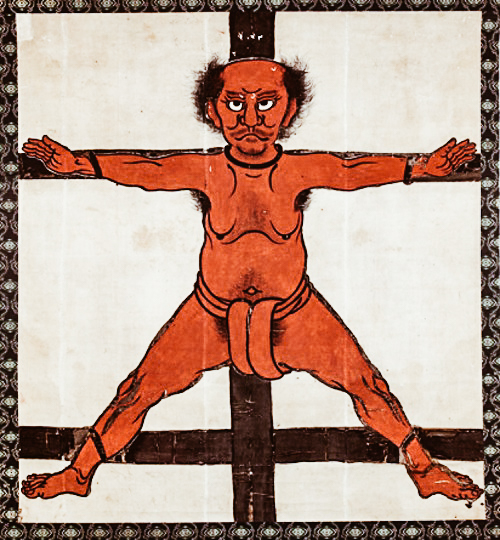
photo credits: japanworld.info
A curiosity: on the Lida line a railway station was opened bearing the name of the brave Samurai, a place not far from where he was crucified.
Japan Tradition: Sanja Matsuri
photo credits: Yoshikazu TAKADA
The festival of the three temples
The Sanja Matsuri (三社祭) is one of the most famous festivals, largest and "wildest" festivals in Tokyo dedicated to the Shinto religion. The festival is held in honor of Hinokuma Hamanari, Hinokuma Takenari and Hajino Nakatomo, the three men who founded the Sensō-ji temple.
The Sanja Matsuri is held on the third weekend of May at the Asakusa temple and the sumptuous parade involves three mikoshi (portable temples), dances, traditional music and lasts about three days.
Like most Japanese festivals, the Sanja matsuri is also a religious celebration dedicated to the spirits of the three men, founders of the temple. This festival seems to have been born in the 7th century and is also known as "Kannon Matsuri" and "Asakusa Matsuri" and with a different shape than today.
The modalities in which today's Sanja Matsuri is organized were established during the Edo period when in 1649 the shogun Tokugawa Iemitsu commissioned the construction of the Asakusa temple.
If you happen to be around Asakusa during the festival days, you can feel an atmosphere full of energy. People flock to the streets surrounding the Sensō-ji temple to the sound of flutes, whistles and taiko (traditional Japanese percussion).


photo credits: Atsushi Ebara, Yoshikazu TAKADA
The Mikoshi
The main attraction of this festival is the three mokoshi belonging to the Asakusa temple. These three elaborate temples in black lacquered wood have the function of being a miniature and a portable version of the Asakusa Temple. Decorated with sculptures and golden leaves, they weigh about a ton and are transported by long poles held together by ropes. For each mikoshi there is a need for about 40 people for safe transport and during the day, around 500 people participate in the transport of each temple.
The "parade" of these mikoshi is perhaps the most important moment of the day and the streets are crowded as they pass. As they are also transported, they are agitated and made to bounce strongly, because it is said that this leads to intensifying the power of the Kami inside and that it helps to increase luck in the respective neighborhoods.
While the three main mikoshi are the most important objects in the streets during the Sanja Matsuri, there are about 100 other smaller mikoshi scattered in the neighborhood on Saturday. Many of these temples are also transported by women or children.

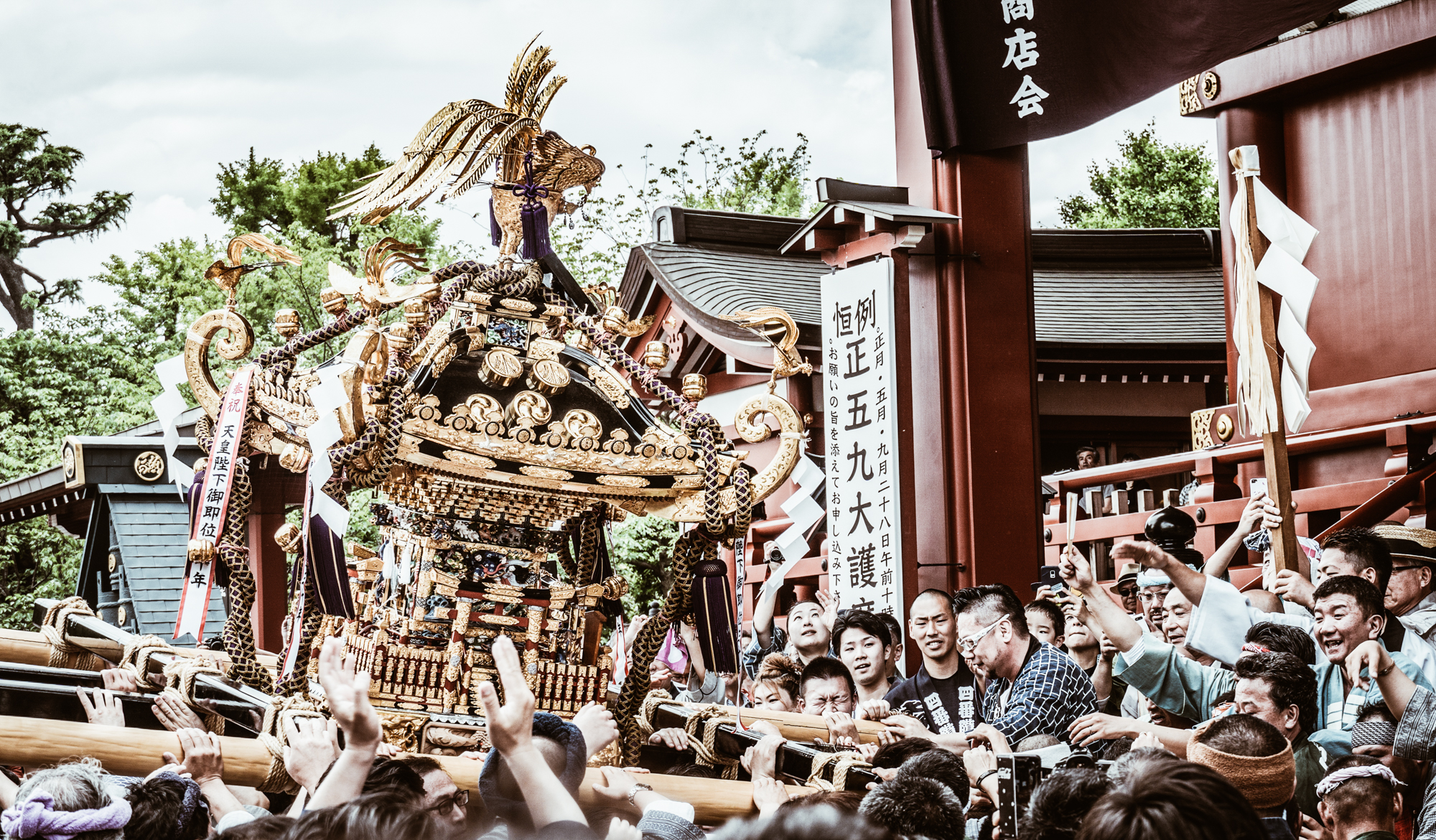
Day after day
The Sanja matsuri, is a festival that lasts several days and begins on Thursday with an important religious ceremony. This function requires the priest responsible for the temple to perform a ritual that makes the Kami of the three founders of the temple move from within into the three mikoshi. The latter will then be the protagonists of the parade that will last all weekend in Asakusa.
By opening the three small doors of the mikoshi the three spirits are invited to enter the miniature temples where they will stay for the duration of the festival. The interior of these mikoshi is also concealed from the public by a thin cotton curtain.

photo credits: Yoshikazu TAKADA
But the actual parade begins on Friday, known as Daigyōretsu (大 行列) which literally means "great parade".
The famous procession goes down via Yanagi Street and continues to the Nakamise-dōri up to the Asakusa temple. This festival is also well known for the sumptuous costumes of the participants, but also for the geishas and city officials who wear hakama, traditional Japanese clothes.
In the evening, six mikoshi from the most central neighborhoods are sent in procession on the shoulders of several dozen people.


photo credits: Hong Seongwan, Yoshikazu TAKADA
The following day, Saturday, about 100 mikoshi belonging to the 44 districts of Asakusa gather at the Kaminarimon and then leave on parade via the Nakamise-dōri in the direction of Hōzōmon. Once here they pay their respects to Kannon, the goddess of Mercy. Later, the mikoshi are taken to the Asakusa temple where the Shinto priest blesses them and purifies them for the coming year. Once the ceremony is completed, these small portable temples are transported back to their respective neighborhoods.
However, the most important event of the Sanja Matsuri takes place on Sunday. It is in this day in fact that we can see the parade of the three mikoshi belonging to the Asakusa Shrine. They march along the Nakamise-dōri to arrive at the Kaminarimon on Sunday morning. These three mikoshi enclose the three spirits of the three founding men of the Sensō-ji temple and, during the final day of this festival, they come to visit and bring blessings to the 44 districts of Asakusa.
When evening arrives, the three mikoshi find their way back to the Asakusa temple creating another great procession that lasts until late at night.


photo credits: ageless foto, Yoshikazu TAKADA
Yakuza Show
This festival of monumental size, also allows to mix fringes of the population that usually remain very detached. It is indeed common to find the Yakuza performing in fundoshi, without shame or fear, proudly showing their tattoos. In the eyes of a westerner, not accustomed to Japanese culture, this could almost seem like a comic scene. However, don't dare to laugh if you don't want bad luck to hit you!


photo credits: Hong Seongwan, syasya_akemi
Japan Tradition: Kanda Matsuri
The festival held on odd-numbered years
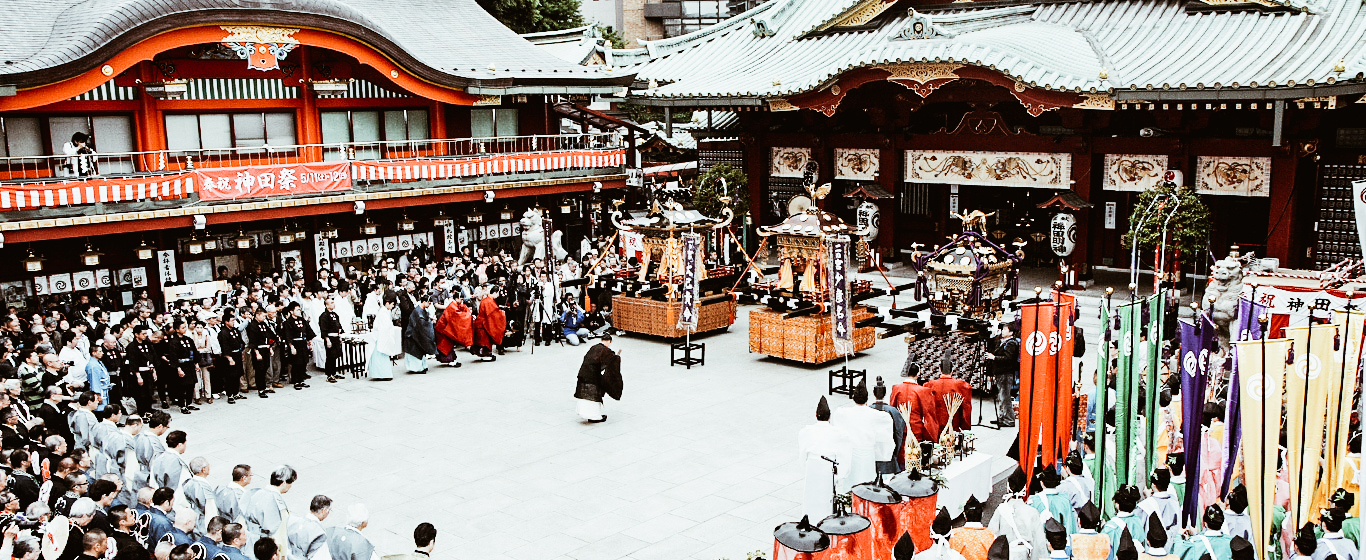
photo credits: dydo-matsuri.com
In the middle of May on every odd-numbered year, the Kanda Matsuri (神田祭) takes place in Tokyo’s Kanda. Together with the Sanno Matsuri and the Fukagawa Matsuri, Kanda Matsuri is one of the three most important Shinto festivals being held in Tokyo. It is also one of the three largest festivals of Japan together with Osaka’s Tenjin Matsuri and Kyoto’s Gion Matsuri.
The origin of Kanda Matsuri dates back to the Edo Period (1603-1867), when the shogun Tokugawa Ieyasu ruled over Edo, now modern day Tokyo. It is for this reason that Kanda Matsuri is also sometimes known as Tenka Matsuri (Tenka meaning shogun).
The celebration of this festival also doubled as a demonstration of prosperity under the new regime.


photo credits: xin beitou, Atsushi Ebara
At the same time, the Sanno Matsuri took place to celebrate the new political center and its rulers. Because of the long and extravagant preparations, competition between the two festivals grew, and eventually, it was decided to celebrate them in alternate years. Under this new rule, Kanda Matsuri was to be celebrated in the middle of May on odd numbered years , while the Sanno Matsuri would be celebrated in the middle of June on even numbered years.
Today, Kanda Matsuri is celebrated in honour of the gods residing in the Shinto shrine called Kanda Myojin that can be found nestled among modern buildings in one of the most exclusive neighbourhoods in Tokyo, Chiyoda ward. The shrine is dedicated to 3 deities: Daikokuten, the god of good harvest and matrimony, Ebisu, the god of fishermen and businessmen and Taira no Masakado, a revered samurai of the 10th century who was deified.

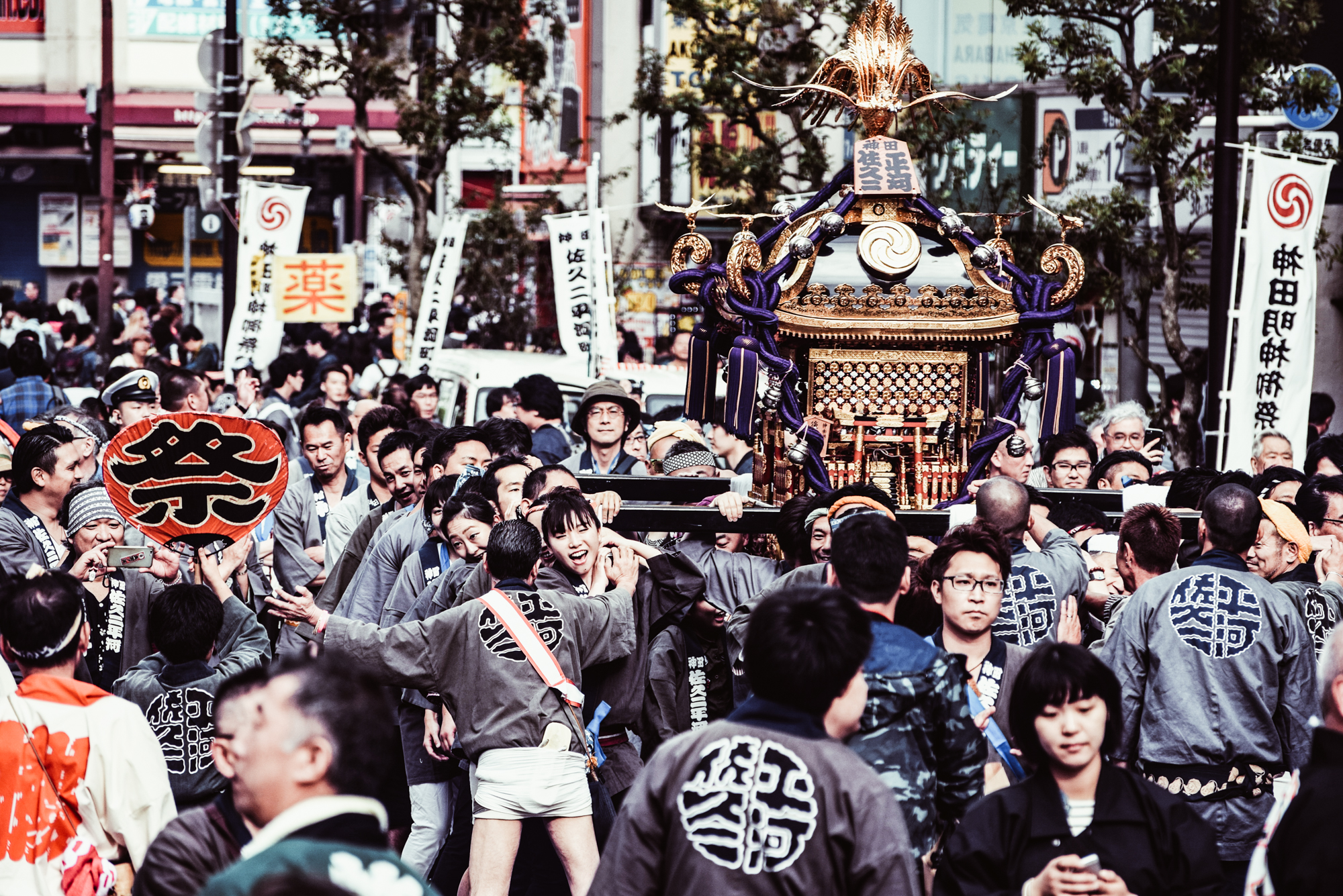
photo credits: rove.me, bill ben
Celebrating prosperity and good fortune
Like most other festivals, shinto rites are an essential part of the preparations. On the eve of the main procession, the kami (gods) of the shrine are invited to enter the three finely decorated mikoshi (portable shrines) through these rituals. At 8 a.m. on the day of the festival, these mikoshi are paraded through the streets of Kanda, continuing down to Nihonbashi, followed by Otemachi, and finally Akihabara, before returning to the temple at around 7 p.m. This procession is typically accompanied by an immense crowd of people, along with musicians, priests riding on horseback and many other participants wearing colorful, traditional clothes.
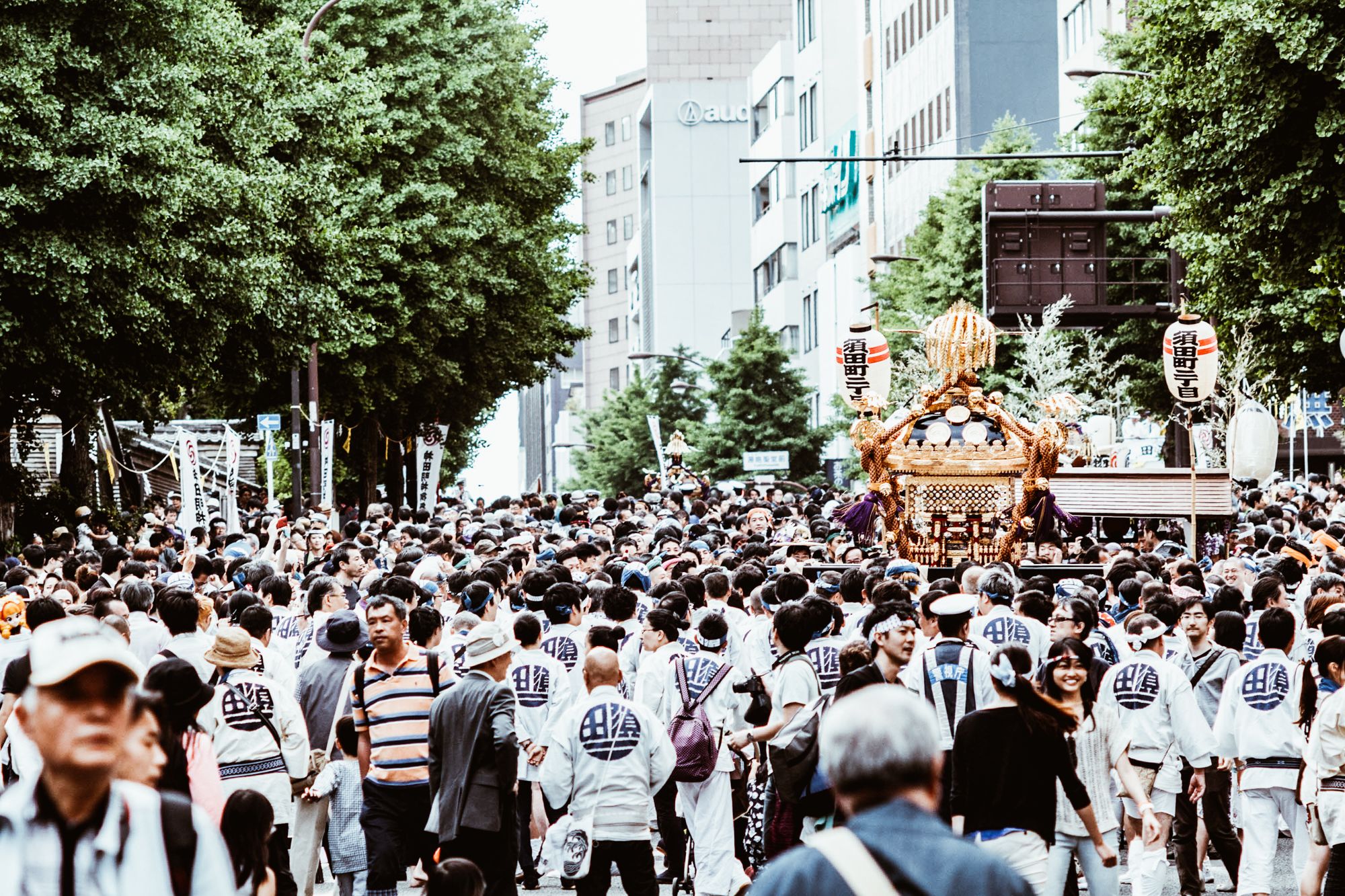

photo credits: nlgwest , Kemy Shibata
At the same time, there is a smaller three-hour long secondary procession being held. This is attended by men on horseback dressed as samurai, characters from folk stories, musicians, and dancers who depart from Arima Elementary School in the early afternoon and proceed north towards the Kanda Myojin shrine.
The next day following the festival is dedicated to the procession of mikoshi from various neighbourhoods in the Kanda and Nihonbashi district. Each of them contains an ujigami, guardian deities who, on this occasion, are housed in mikoshi to bless the residents of the area as they are paraded through the streets.

photo credits: Eugene Kaspersky
Many small curiosities
Those who were born and raised in Edo were called “Edokko”. Edokko had a peculiar personality and they were said to be very open and cheerful people. All these characteristics were, and still are, reflected in the Kanda Matsuri, a festival full of energy.
The procession with all its main elements also recalls the celebrations for Tokugawa's victory in the battle of Sekigahara, which cleared the path to the shogunate that led to a long period of peace and prosperity in Japan. Originally, townspeople would dress up and give thanks to the shrine through lavish performances of Noh theater.

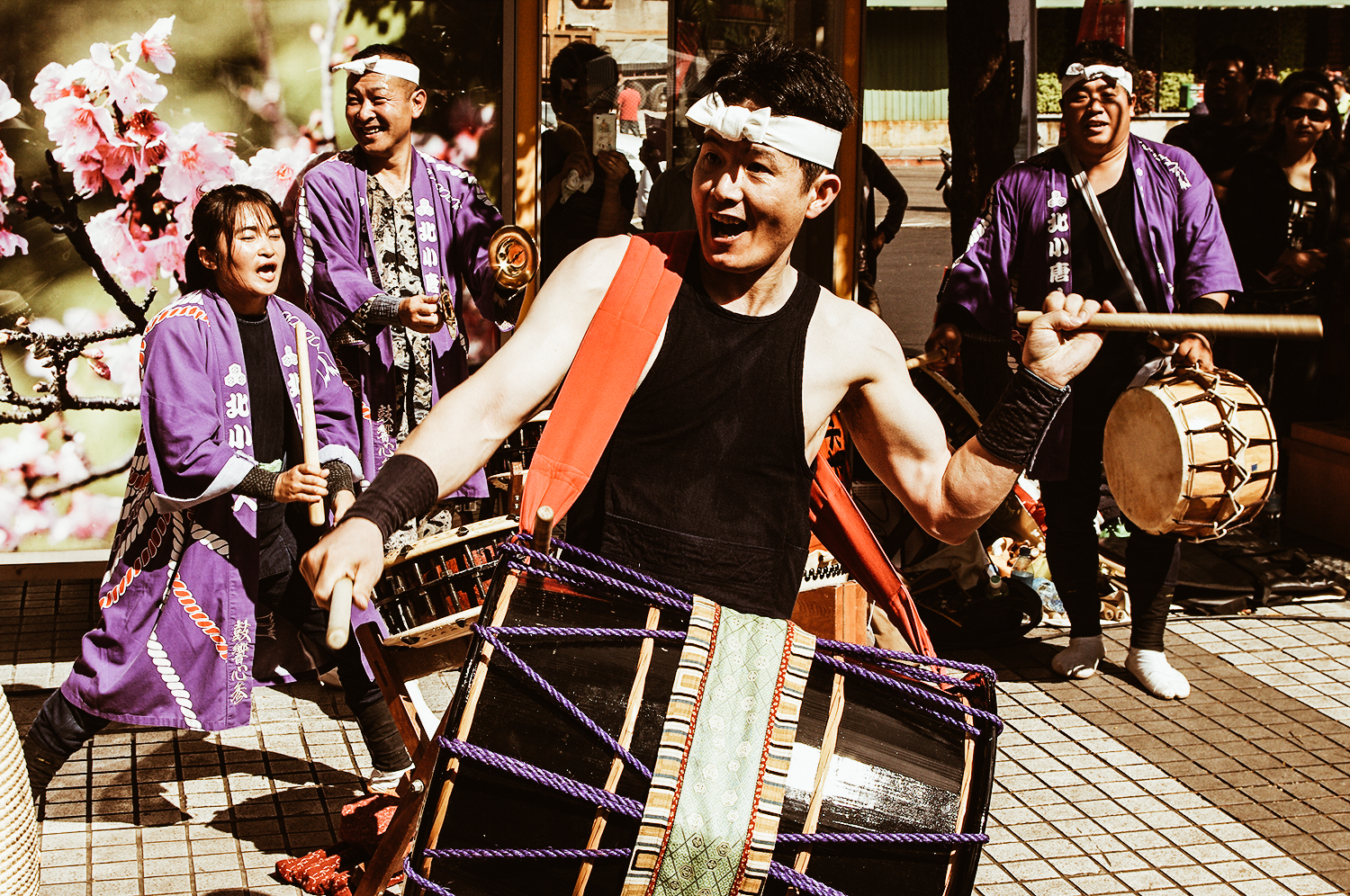
photo credits: tokyoexcess.blogspot.it, xin beitou
During the Edo period, the parade with its beautiful decorations would pass by Edo Castle, giving common people a rare chance to enter its grounds.
Most of the original floats, which had been used since the early days of the festival, were destroyed in the Great Kanto Earthquake of 1923 and in the bombing of WWII.


photo credits: viajejet.com, fastjapan.com
Japan Tradition: Aoi Matsuri
The Hollyhock Festival
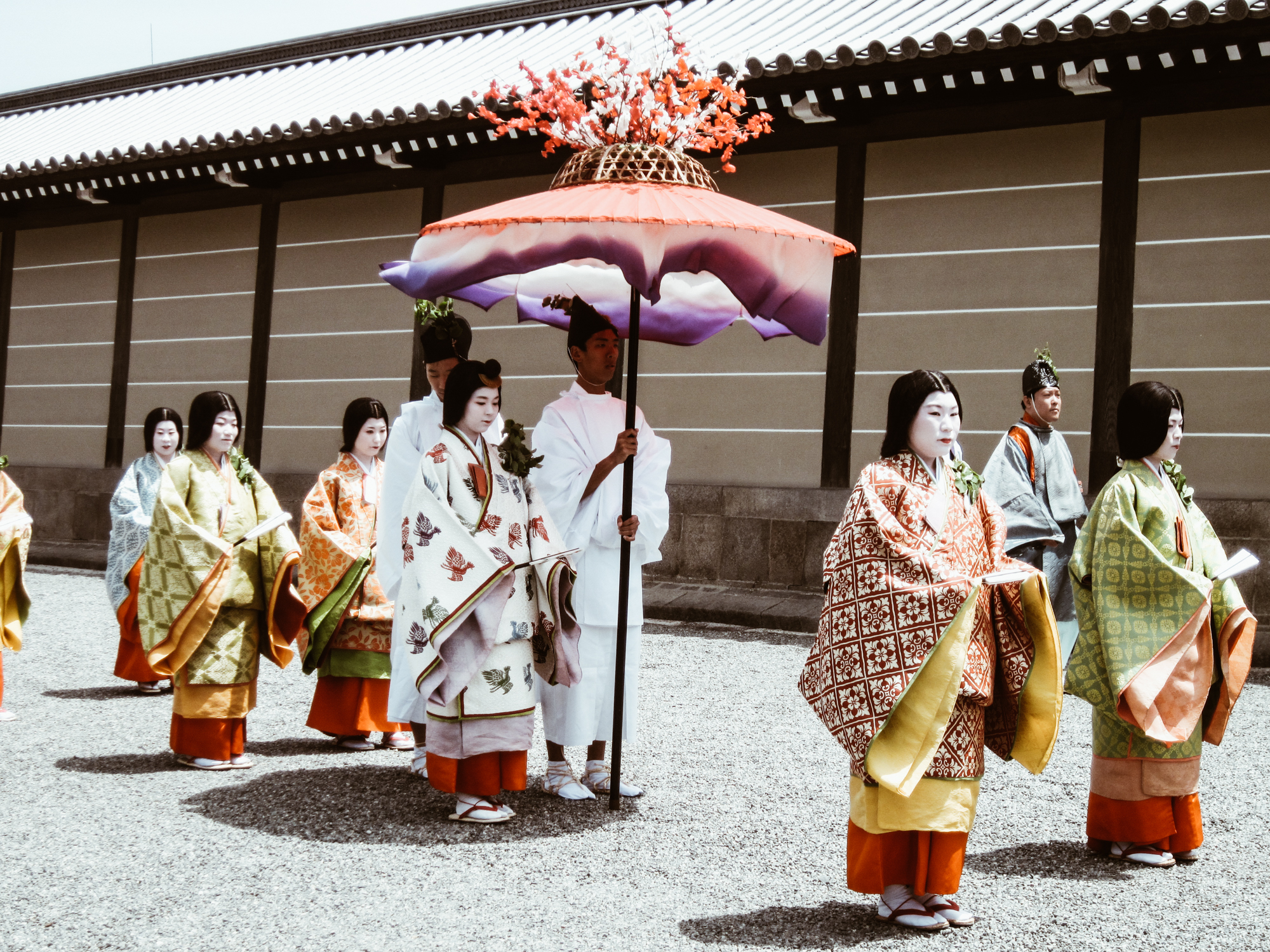
photo credits: mutabi.wordpress.com
One of Kyoto’s three most well-known festivals, Aoi Matsuri (葵祭) takes place every year on the 15th of May. The name of this festival derives from the hollyhock leaves that participants in the festival’s parade carry with them as they walk down the designated route. In Japanese, “Aoi” (葵) refers to the “alcea rosea” or, as the namesake of this festival, the “hollyhock”. This plant produces brilliant colours and beautiful flowers, and its leaves are believed to have the power to prevent natural disasters.
The main attraction of this festival is a grand parade that involves more than 500 people dressing up in the aristocratic styles of the Heian period (794 - 1185 CE).
This annual parade starts from the Imperial Palace, and the participants will walk down the road until they arrive at Kamo Shrine. This name refers to the shinto sanctuary complex that consists of Kamigamo shrine and Shimogamo shrine.


photo credits: amanohashidate.jp, Nobuhiro Suhara
The Origins
The festival first started during the reign of Emperor Kinmei (539 - 571CE), when a period of heavy rains ruined the harvest and an epidemic spread through the country.
It was believed that these tragedies came about because the Kamo deities wanted to punish the people. Thus, the emperor sent a messenger to the temple with offerings and to perform various rituals in order to appease these deities. Part of these rituals also required the riding of a galloping horse.


photo credit: Alex Hurst, Clement Koh
This became an annual event with the intention of preventing further disasters. However, during the reign of Emperor Monmu (697 - 707CE), it was suspended due to the huge amount of people joining to watch the rituals. In the 19° century, Emperor Kanmu established the seat of the imperial throne in Kyoto and this represented the beginning of the Heian period in Japanese history. The emperor recognised the Kamo deities as protectors of the capital and reestablished the Aoi Matsuri as an annual imperial event. The festival was sometimes discontinued in some periods of Japanese history, especially during World War II, but it was actively resumed in 1953. The Saiō-Dai tradition in this festival was also initiated in 1956.
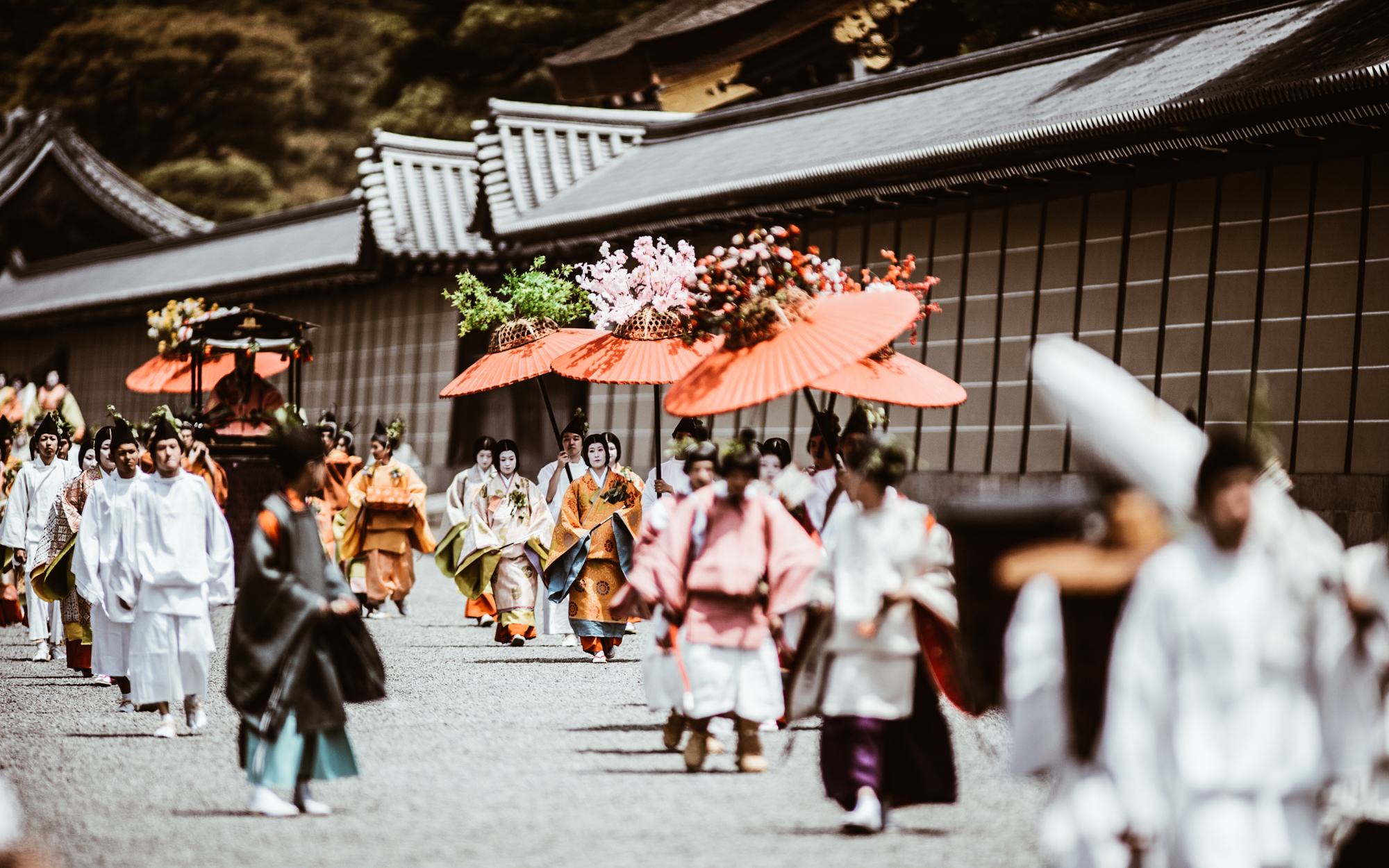
photo credits: regex.info
The characters of the Festival
There are two main characters in the Aoi Matsuri: the Saiō-Dai and the Imperial Messenger.
The Saiō-Dai is a woman chosen from the sisters and daughters of the emperor to dedicate herself to the Shimogamo Shrine. The role of the Saiō-Dai is to maintain spiritual purity and represent the Emperor at the festival. Today the Saiō-Dai is chosen from all unmarried women of Kyoto. She wears twelve layers of silk robes (jūnihitoe), finely colored in the traditional style of the Heian court. To maintain ritual purity the Saiō-Dai has to go through several ceremonies of purification before the festival’s parade.
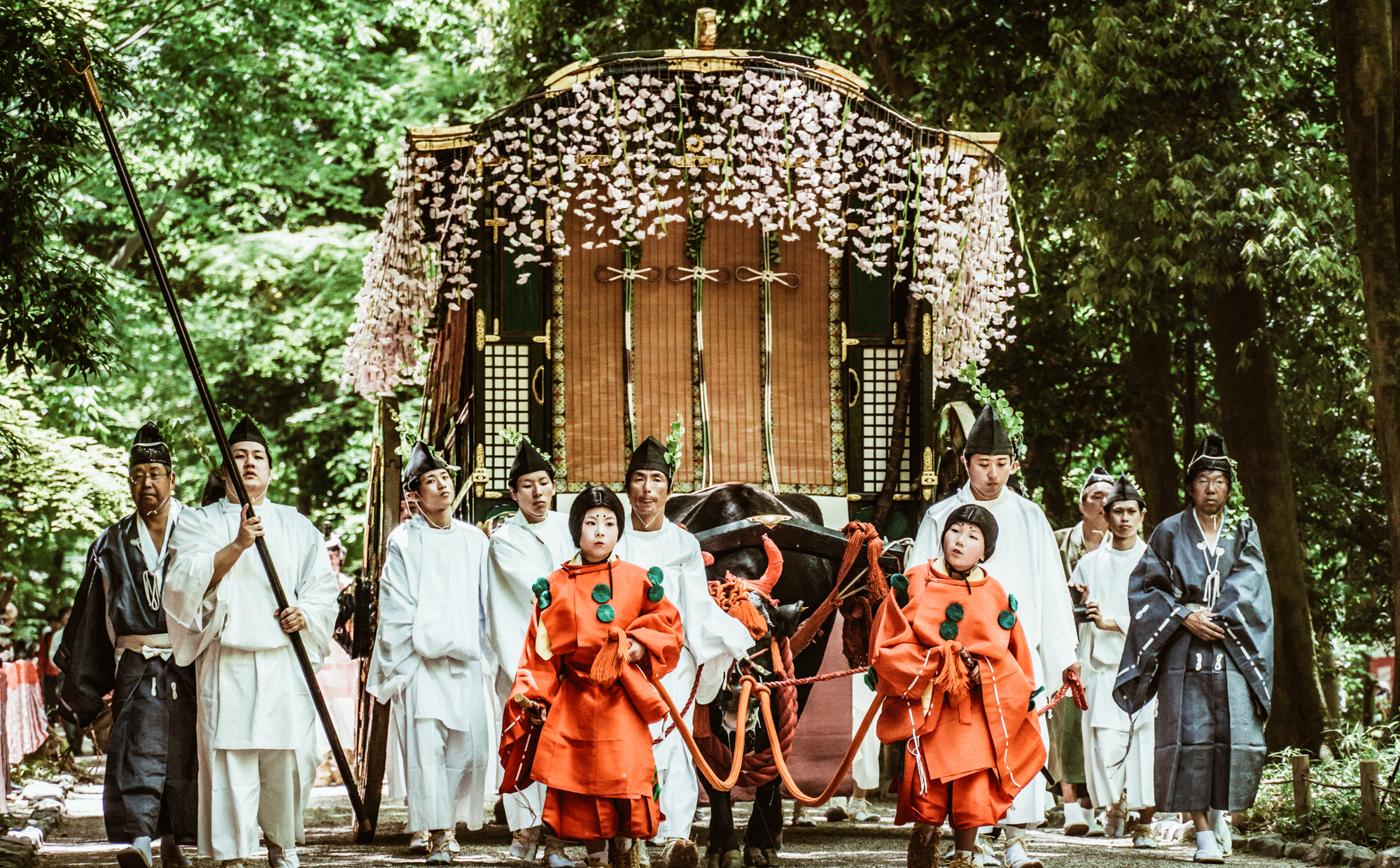

photo credit: Hong Seongwan
The Imperial Messenger, on the other hand, conducts the procession of the festival by riding a horse. During the Heian period, he would be a Fifth-Rank courtier holding office of middle or lesser capitan. He was also typically a man destined for high office. His role was to read the imperial edict and present the emperor’s offerings. During the Heian period, the Saiō-Dai and the Imperial Messenger would be accompanied by ten dancers and twelve musicians.

photo credits: Hisanori
Celebrations Today
The parade starts at 10:30 a.m. on May 15th at Kyoto’s Imperial Palace. It then slowly departs for two important stops: the Shimogamo Shrine, where the procession should arrive at 11:15 a.m., and the Kamigamo Shrine, where they will arrive at 3:30 p.m. The Saiō-Dai and the Imperial Messenger perform their rituals at these stops. The Saiō-Dai pays her respects to the deities, while the Imperial Messenger intones the imperial rescript, praising the deities and requesting their continued favor.


photo credits: Slugicide, find-your-jpn.com
Japan Modern Culture: Studio Ghibli

photo credits: ghibli.jp
Raise your hand if you didn’t fall in love with Howl, the sorcerer with his wandering castle, or who has not felt tenderness for Kaonashi, the Faceless of "The Enchanted City" ... If you are among those who love the productions of Studio Ghibli too, then you are in the right place!
The Hot Wind of the Desert
June 15, 1985: Hayao Miyazaki, Isao Takahata, Toshio Suzuki and Yasuyoshi Tokuma decided to found 株式会社スタジオジブリ or Studio Ghibli Inc. whose name was chosen by Miyazaki with the intention of "creating a whirlwind in the world of Japanese animation". The roots lie in the passion for aviation of the Japanese director and screenwriter, in fact "Ghibli" is not only the warm wind of the Sahara desert but, during the Second World War the Italian reconnaissance plane Caproni Ca.309 was nicknamed "Ghibli". Curious, isn't it?
At first no one thought that the project would been very successful, so to minimize the risk of failure, 70 temporary entertainers were employed and the office of the studio consisted of a 90 square meter office rented in Kichijoji, Tokyo.
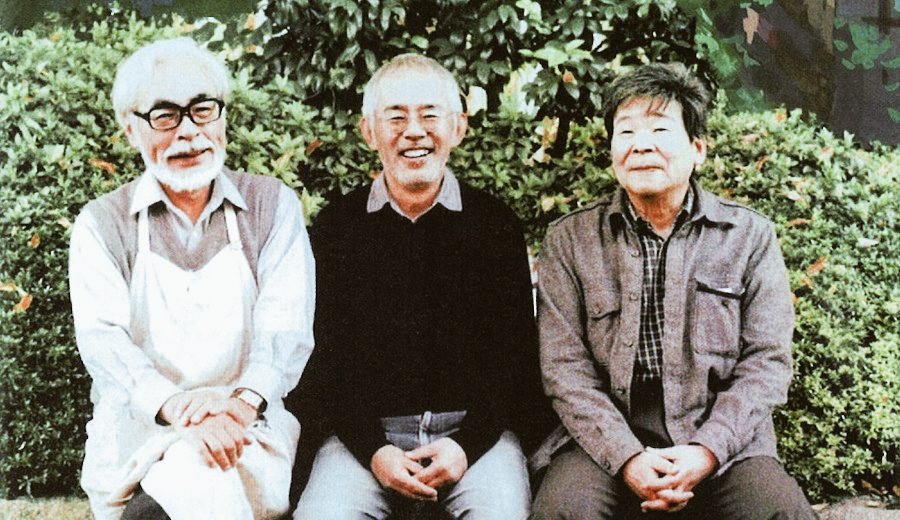
photo credits: sgcafe.com
A success after another
Studio Ghibli began its official production with "Laputa - castle in the sky", "My neighbor Totoro" and "Grave of the Fireflies”, three animated pearls acclaimed by critics. However, at first, these three wonderful pieces did not achieve the same success they accumulated over time.
It was "Kiki's Delivery Service” that achieved great results in 1989 becoming the success of the year at the Japanese box office. This allowed for permanent contracts to be introduced into production and to hire new staff. By now the Studio had almost 300 people working and they began to think of moving to a new location just during the production of Porco Rosso, whose quality was not excellent due to the crowding in office.
In 1992 the new study, whose realization was followed in first person by Miyazaki who drew the final appearance, was ready. They were finally ready to move to Koganai (Tokyo). Computer-generated imagery (CGI), which allows a digitized two-dimensional image to be handled in any kind of three-dimensional view, was introduced with "Pom Poko".
In 1994 and 1995 "Whisper of the Heart” was released. At the end of the 90s and the early 2000s the Studio Ghibli signed one of his most beloved masterpieces, achieving the deserved success also outside Japan: Princess Mononoke (1997), Spirited Away (2001) and Howl's moving Castle (2004), directed by Hayao Miyazaki.
In 2006 was the turn of Gorō, son of Miyazaki, to direct the film Tales from Earthsea and, two years later, Studio Ghibli became the only Japanese animation studio to use exclusively traditional drawing techniques for their own productions.
Unfortunately, in 2013, on the occasion of the 70th International Film Festival of Venice, following the presentation of Studio Ghibli’s 19th animated film "The Wind Rises", Miyazaki announced his retirement, with consequent displeasure of the fans. The producer said that his advanced age no longer allowed him to follow the long accomplishments of his films and so, on November 8th 2014, the Academy awarded him with the Oscar for his career.
2015 was a strange year for Studio Ghibli: Hiromasa Yonebayashi, director of "Arrietty” and "When Marnie Was There” left the production. During a conference in Tokyo, Miyazaki announced his commitment to a new project whose production could have required more than five years of work. In fact, in 2017, through an interview with producer Toshio Suzuki, we discovered that the new feature would have been an adaptation of the 1937 Japanese novel "Kimi-tachi wa do ikuruka?" by Genzaburo Hoshino.
We just have to wait for the surprises that years of experience and passion will gift us!
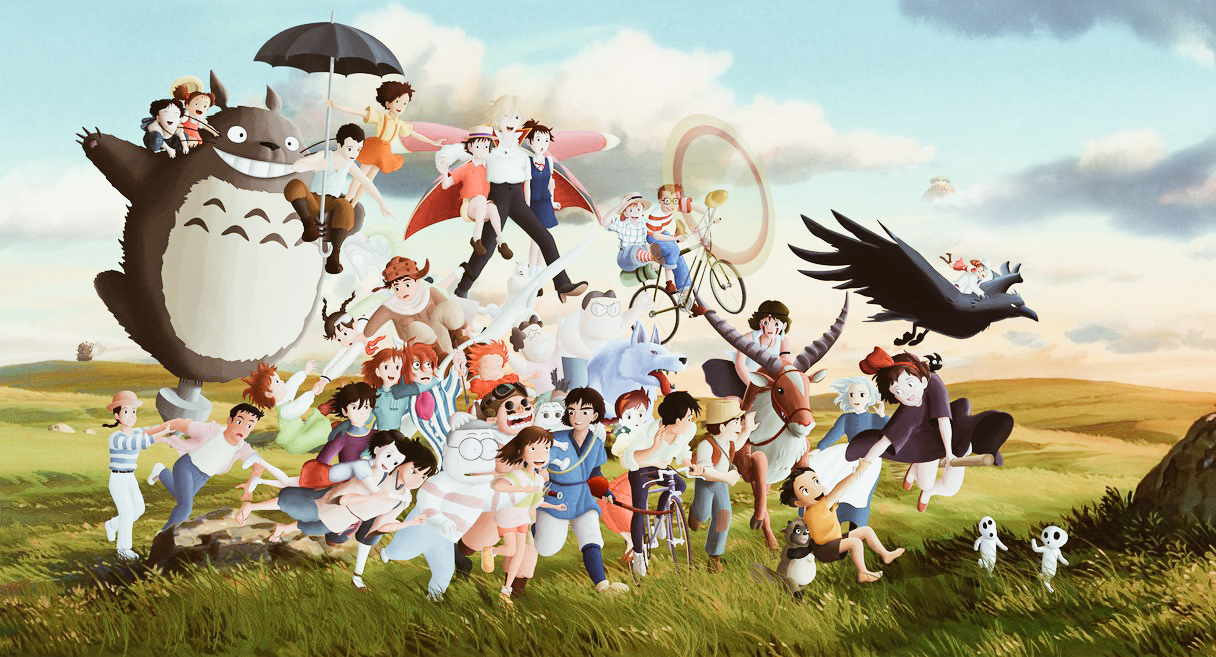
photo credits: tokyotreat.com
Ghibli Museum
Reachable with the JR Chuo line for the delightful town of Mitaka, the museum presents a variety of rooms that mix the vintage and steampunk style overflowing with references to Japanese folklore and everyday life. Inside, there is also a cinema where unpublished short films of about 15 minutes are screened.
Moreover, at different times of the year, special exhibitions are set up for limited periods of time! Getting tickets for the Museum is not easy as they are not sold in the venue. Reservations must be made some time before through the Lawson ticket offices online or in the Lawson convenience stores on the Japanese territory, or at specific ticket offices abroad where the tickets are placed at available only for 4 months a year.
For any specific information and for all updates, you can check the official website, also available in English here: http://www.ghibli-museum.jp/en/

photo credits: forbes.com
Exhibition of Studio Ghibli in Tokyo
The "Toshio Suzuki and Studio Ghibli Exhibition", the first exhibition after 3 years of the study at the EDOCCO cultural exchange center, Kanda Myojin Temple in Tokyo, inaugurated on April 20 and it’s running until May 12. It’s a must for anyone who wants to be catapulted into the enchanting world of Ghibli. You can admire the illustrations and documentation revealing the behind the scenes of the plots and production processes of these masterpieces from its foundation until today.
A large merchandise section is also available, including special ema and omamori created in collaboration with the temple itself. Enthusiasts will also find themed menus at the EDOCCO café such as the "Makkuro na kuro goma ohagi no ocha set" in homage to Makkuro Kurosuke (Soot Sprites) or the "Tonari no Kakigori ”inspired by My neighbor Totoro.
It is possible to buy tickets for the exhibition both on-site and online at a cost of 1,300 ¥ for adults and ¥ 800 for students. Official website: https://ghibli-suzuki.com/
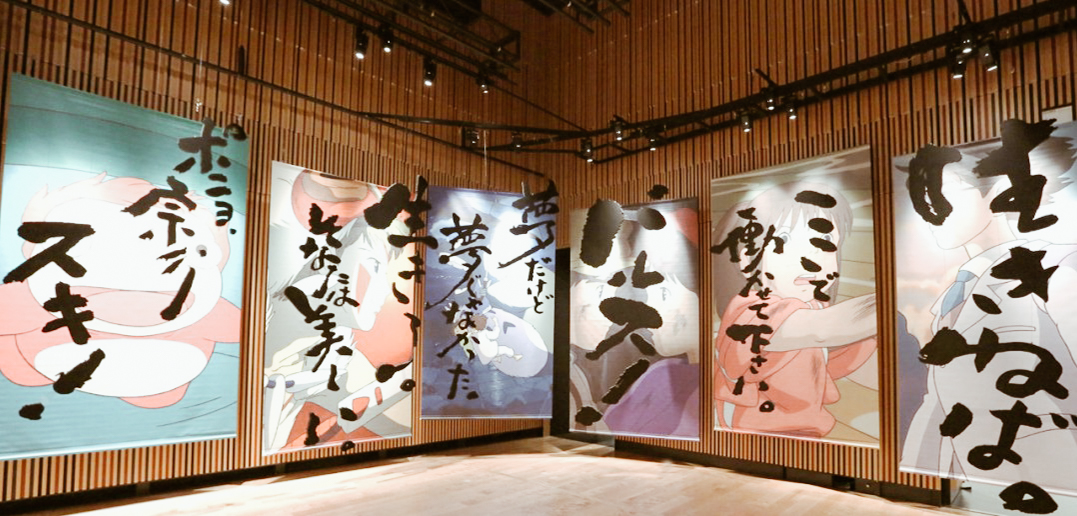
photo credits: amu-zen.com
Japan History: Sanada Yukimura
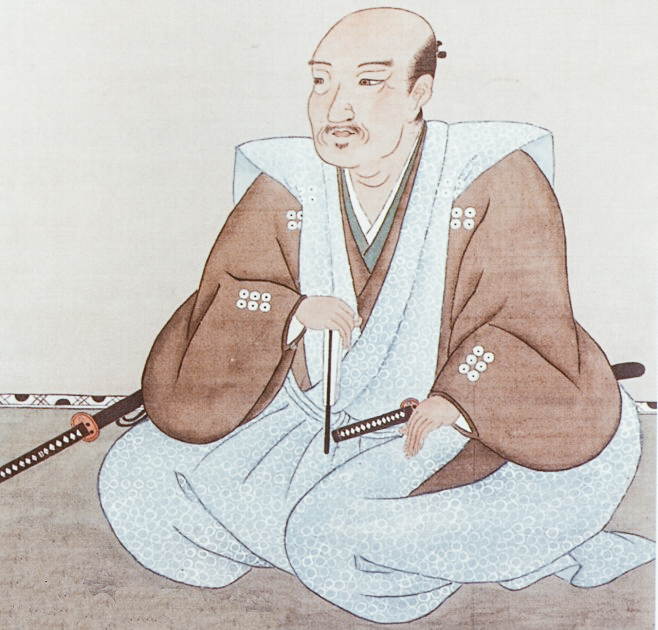
photo credits: wikipedia.org
Sanada (Yukimura) Nobushige was one of the greatest samurai of the Sengoku period. Second child of Sanada Masayuki and younger brother of Sanada Nobuyuki, he was never called "Yukimura" during his lifetime, since his real name was Nobushige. It seems that Yukimura was obtained at the end of the Edo period. Known as "Crimson Demon of War" for his blood-red banners and red armor, he was also recognized as "the greatest warrior of Japan" and even "The last Sengoku hero" by his peers.
As a young man, he was sent by his father as a hostage to the Uesugi clan in exchange for Uesugi's support against the Tokugawa. The father who later sided with Toyotomi Hideyoshi, as Uesugi had done, allowed him to return home to Ueda.
Sanada Nobushige served Hideyoshi directly. His first wife, Aki-hime, was the daughter of Otani Yoshitsugu even though adopted by Toyotomi Hideyoshi. Nobushige had seven daughters and three children with four wives, the last was born two months after his father's death.
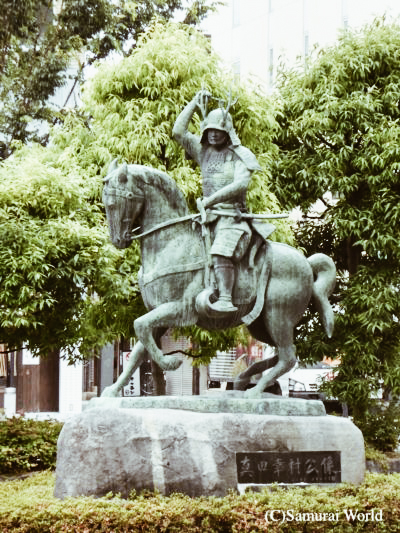
photo credits: samurai-world.com
Ueda Castle, built in 1583, was the home of the Sanada clan. The fact that it was well built was first tested in 1583 when the castle resisted the attack of a numerically superior Tokugawa force. The defeat would have been embarrassing for the Tokugawa in the future. Another similar siege of Ueda Castle in the 1600s at the time of the Battle of Sekigahara also saw Tokugawa Hidetada, son and heir of Ieyasu, who led his army along Nakasendo, strategically important. Along the way, he stopped and besieged Ueda Castle. Although there was a great distance from the battlefield of Sekigahara, events at Ueda Castle would have almost destroyed the intentions of the Tokugawa legions. The Sanada resisted long enough for Hidetada to arrive late to the battle itself, depriving Tokugawa of about 38,000 men. Nobushige commanded only 2,000 men inside the castle.
Sanada Masayuki and his son Nobushige kept Ueda's castle as an ally of Western forces, however, Sanada Nobuyuki, was fighting for the Tokugawa. This ensured that at least one member of the Sanada family would be among the winners, regardless of the outcome. This was clearly a plan to preserve the family name. Following Sekigahara, Nobushige and his father were deprived of their domain and exiled to the holy mountain, Koya.
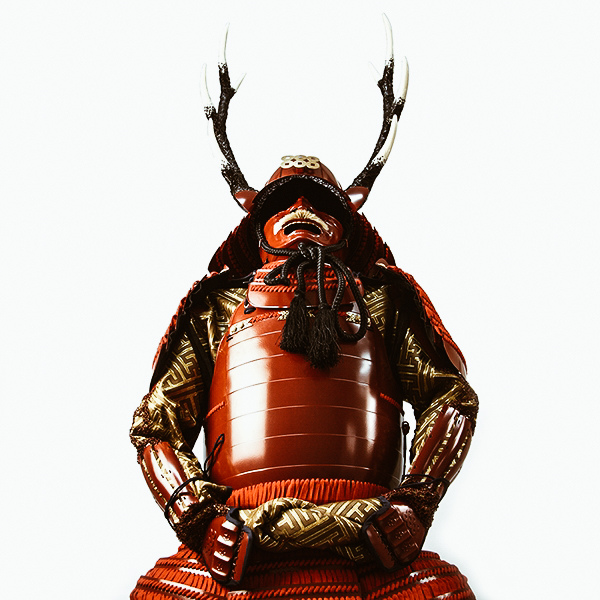
Photo Credits: tozandoshop.com
14 years after Sanada's father and son were sent into exile, Nobushige would rebel against the Tokugawa again during the winter siege of Osaka, and again the following year in the summer campaign. Nobushige had built a crescent-shaped fortress in the southwestern corner of Osaka Castle, known as Sanada Maru. The fortified outpost was surrounded by a wide, deep and dry moat. The earth of the moat was piled up inside, and along the top of this embankment, there was a simple two-story wooden wall, with platforms at regular intervals. Apparently, the Sanada Maru was armed with cannons along the walls. Sanada Nobushige and about 7,000 men repeatedly repulsed around 25,000 Tokugawa allies. Sometimes the Sanada samurai left the borders of the Sanada Maru to counter the enemy troops.
The following year, during the summer siege of Osaka, Sanada Nobushige commanded the right flank of Toyotomi's forces. On June 3, despite being completely exhausted from the battle against Date Masamune's forces, Nobushige and his men had returned to Osaka Castle to find the 150,000 Tokugawa men preparing to make one final assault. Hoping to catch them off guard and destroy their formations, Nobushige sent his son, Daisuke, to instruct Hideyori to look for opportunities to get out of the castle and attack the Tokugawa.
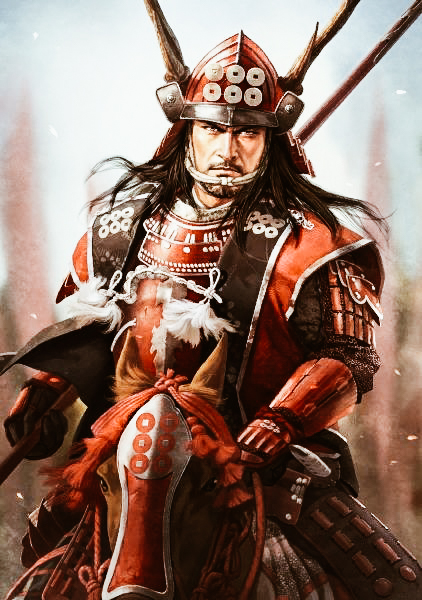
photo credits: pinterest.it
However, at the time of the attack, Hideyori appears to have lost control and failed to launch a counterattack that could have reversed the siege. The Sanada troops were overwhelmed. Seriously wounded in the fierce battle against Matsudaira Tadanao who had pledged him for most of this day, from 12 to 17, Nobushige sat under a pine tree in the Yasui Shrine grounds, unable to continue. When the wave of enemy forces approached, he calmly said his name, and saying that he was too tired to continue fighting, he allowed a Tokugawa samurai named Nishio Nizaemon to take his head. Sanada Nobushige was 47 years old. The news of his death spread rapidly and the morale of Osaka's troops fell.
The name Yukimura was known throughout Japan due to its fearless fighting.
Shimazu Iehisa of Satsuma praised Yukimura, writing "Sanada was the greatest warrior in Japan, stronger than any warrior in the stories of ancient times. The Tokugawa army was half defeated. I say this only in general."
A statue of the weary warrior is now found under the second-generation pine tree in the ground of the sanctuary.
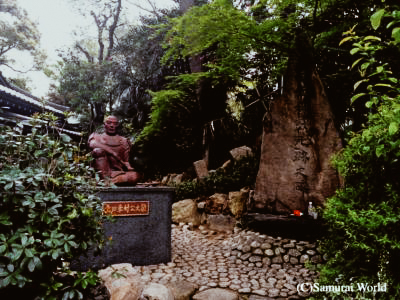
photo credits: samurai-world.com
Japan Modern Culture: 令和 ReiWa, the new Era
令和: ReiWa, the new Era
Exactly one month ahead of Prince Naruhito's accession to the throne, Chief Cabinet Secretary Yoshihide Suga announced the beginning of the new Era for Japan.
Reiwa, formed by the kanji 令 (rei) "auspicious", "ordered" and 和 wa "harmony", "peace", reflects the spiritual unity of the Japanese people, because "culture is born and nourished when people take care of each other lovingly" explained Prime Minister Shinzo Abe immediately after the announcement.
photo credits: asia.nikkei.com
Time passes following the Era of the Emperor
In the Japanese culture, the periods of time throughout history are subdivided according to the system of "eras", gengō (元号): it involves the use of two kanji that represent the hopes, ideals and good intentions for the period to come, followed by the number from the year of the emperor's mandate. According to this system, from 1989 the current era is Heisei 31 (平成31), or the 31st year of the Heisei Era (31 years of "achieving peace" under the guidance of Emperor Akihito). From May 1st, 2019 we will be officially in the Reiwa Era (令和1 - Reiwa 1).

photo credits: tg24.sky.it
The roots of Reiwa
Unlike all previous eras whose names were inspired by Chinese literature, Reiwa has its roots in Man'yōshū, 万集 "The Collection of Ten Thousand Leaves", the oldest collection of Japanese poetry that has survived till today. The authors belong to all walks of life: members of the imperial family, peasants, soldiers, artisans and monks. This choice breaks an over 1300 years old tradition and has a highly symbolic value for Modern Japan. We are wishing for an era of hope and unity and, above all, an era aimed at the preservation of nature. Reiwa will face a path aimed at harmony and to give strength to a nation that in the course of history has always raised up with pride in every adversity and that has never been pulled back.
But how was this name decided?
The choice was made between a list of 30 proposals prepared by Japanese and Chinese literature and history experts appointed by the government for this important task. The traditional procedure requires the Government to make the final choice in a cabinet session, after which the chosen name is revealed to the Emperor in office and he prepares the decree for the proclamation of the new Era.
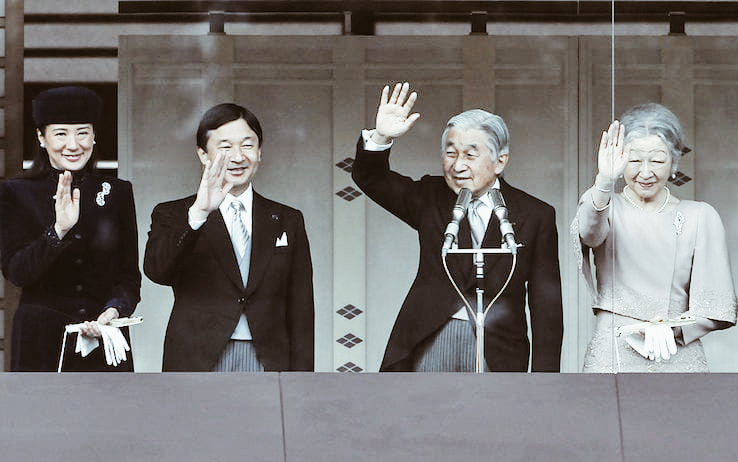
photo credits: kelo.com
Naruhito, Emperor of the Throne of Chrysanthemum
First born of the current Emperor of Japan Akihito and Empress Michiko, Naruhito (皇太子徳仁親王) became the crown prince to the throne following the death of his grandfather, Emperor Hirohito in 1989. Known for his countless charitable works and a series of absolved imperial functions, he will become the 126th Emperor of the Throne of Chrysanthemum (the oldest ever interrupted monarchy in the world) on May 1st, 2019 following the abdication of his father on April 30th, 2019.
The blank pages of a new beginning
The word Reiwa is so full of serenity, even in its pronunciation! The harmony, the peace, the balance that characterize a the people of a nation like that of the Rising Sun thus finds its fulfillment. Just a few days ago, I had a fixed idea in my mind: "a new beginning", I even wrote a thought entitled "Start of a new chapter", and having woken up with the announcement of this new Era, shook me positively. Furthermore, after hearing Prime Minister Abe's speech, my heart was filled with hope. I like the proposal for greater openness to work for those coming from abroad and I believe that this can bring a prosperous future for Japan worldwide.
The spirit of cohesion, solidarity and peace may seem an utopia, but it must start from the small things, from us and then spread like the waves produced by a pebble falling into the water.
Japan Tradition: Saigō Takamori

photo credits: jpninfo.com
Saigō Takamori (1828-1877) is remembered both for his important role in the Meiji Restoration which overthrew the shogunate in 1868 and for his failed rebellion against the new government less than a decade later. Although he died a renegade, a government pardon rehabilitated his reputation and 150 years after the Meiji restoration, the spotlight is again on the last samurai.
Saigō's rise to power began in 1854 when he was recruited by Shimazu Nariakira, the daimyo of the Satsuma domain (now Kagoshima prefecture), to accompany him to the capital of Edo (now Tokyo). As a low-ranking official, Saigō was involved in bridge construction projects and roads. He managed to capture Nariakira's attention with a series of memoranda on the agricultural administration that he submitted to the provincial government. Officially he was employed in Edo as a gardener, but his duties went beyond plants. While in the capital, Saigō made contact with the main personalities who opposed the shogunate. The outdoor work offered a comfortable cover for Nariakira and Saigō to meet and talk, avoiding the obstacles they would face due to their large difference in rank.

photo credits: yabai.com
Saigō quickly built a network of loyalists from Mito (now Ibaraki Prefecture) and other domains. He won the trust of Nariakira with his simple and emotional nature, and over time the daimyo came to look for the opinions of the younger people. However, the situation began to change from 1857 when Abe Masahiro died. He elderly shogunate adviser who had helped ensure the succession of his close friend Nariakira as Satsuma daimyo. Nariakira himself died the following year and the power in Satsuma passed to his younger brother Shimazu Hisamitsu. Meanwhile, the conservative politician Naosuke had taken effective control of the shogunate, launching an important crackdown on the reformists.
Suffering from the loss of Nariakira and facing difficult political prospects, Saigō was determined to follow his teacher to the grave but was persuaded by Gessho, the chief priest of a Kyoto temple, to flee with Satsuma. However, once there, they threw themselves into the sea in Kagoshima Bay and Gessho drowned, but Saigō miraculously survived.
Over the next five years, Saigō suffered periods of exile on the islands of Amami Ōshima and Okinoerabujima. On Amami he was given some freedom and married a local woman. However, After a brief respite on his return from Amami, he was again exiled to an island after angering Hisamitsu. This period of imprisonment became an opportunity for serious reflection on his life and shaped his personality as a caring man of firm principles.
Iechika Yoshiki, Saigō’s biographer and researcher, argues that, unlike most people, he was not afraid of death. Having lost many people he loved and respected, including his parents, Nariakira and Gessho, he was not terrified of dying and saw it as a way to be reunited with his loved ones.

photo credits: nippon.com
Iechika says that Saigō believed that heaven had spared his life for a reason and that he would live to complete his divine call. This philosophy is linked to his famous motto “keiten aijin”, which means "Respect the sky and love people". According to Saigō, the questions of life and death were above human consideration and had to be left entirely to fate.
In 1864 Saigō reconciled with Hisamitsu and returned to the Kyoto political center as commander of the Satsuma army. After rejecting the anti-shogunate forces from the Chōshū domain (now Yamaguchi Prefecture) while attempting to enter the city, he was promoted to the rank of high officer. The event, known as the Hamaguri Gomon incident, was Saigō's first battle experience with an army. The same year, he became chief of staff of the shogunate army sent to punish Chōshū. In 1866, however, Satsuma and Chōshū entered an alliance mediated by Sakamoto Ryōma. Saigō took charge of the opposition forces that would eventually become soldiers of the new Meiji government.
In 1864 Saigō reconciled with Hisamitsu and returned to the Kyoto political center as commander of the Satsuma army. After rejecting the anti-shogunate forces from the Chōshū domain (now Yamaguchi Prefecture) while attempting to enter the city, he was promoted to the rank of high officer. The event, known as the Hamaguri Gomon incident, was Saigō's first battle experience with an army. The same year, he became chief of staff of the shogunate army sent to punish Chōshū. In 1866, however, Satsuma and Chōshū entered an alliance mediated by Sakamoto Ryōma. Saigō took charge of the opposition forces that would eventually become soldiers of the new Meiji government.
In January 1868, the imperial loyalists led by Satsuma and Chōshū proclaimed the restoration of power from the shogun to the emperor. The resistance of the shogunate supporters triggered the Boshin war later in that month. Although the conflict dragged on until the following year, a key victory for the Meiji troops came with the surrendering of Edo Castle in the spring of 1868. With the city and nation in danger and fighting in Edo, Saigō entered the stronghold of the shogunate with only a handful of followers, wanting to try negotiation. Surrounded by enemy soldiers, he faced the prospect of murder. The discussion and cooperation between Saigō and the leader of the shogunate Katsu Kaishū led to the peaceful delivery of the castle, as a "bloodless delivery".

photo credits: nippon.com
In Japan, Saigō Takamori, Ōkubo Toshimichi and Kido Takayoshi are considered the three great figures of the Meiji Restoration. However, according to Iechika, Saigō's success at Edo Castle was something the other two members of the trio could never have achieved. He claims that without Saigō, the Meiji Restoration would never have happened and that people today see the event favorably because of this. On the contrary, if the movement had caused a bloody civil war, it is likely that public sentiment would have been very different. Although Saigō was not the astute politician that Ōkubo was, he had a love and a spirit that the other could not match.
In 1871 Saigō joined the Meiji government and in 1873 he became an army general. However, he resigns a few later after losing a debate about his support for a military expedition to Korea. He returned to his home in the prefecture of Kagoshima, where he spent his time cultivating and hunting. However, In 1877, he was convinced to lead an army of dissatisfied Samurai in the Satsuma rebellion. Driven by government forces in the battles on Kyūshū, the army reached the last position at Shiroyama in Kagoshima. Saigō committed suicide after his soldiers were defeated. He was 49 years old.
Saigō is the likely inspiration for Katsumoto Moritsugu - played by Watanabe Ken in the 2003 film The Last Samurai. The film complains of the passage of bushidō (the way of the Samurai) through Katsumoto, as noted by the Civil War veteran Tom Cruise, Nathan Algren (the character has no direct historical equivalent).
Saigo's association with traditional values in a modernized Japan is why he was called "the last Samurai". Just 12 years after his failed rebellion, he was pardoned by the Meiji government and in 1898 a statue of Saigō and his dog was erected in Tokyo's Ueno Park. Almost a century and a half after his death, it remains a popular historical and cultural icon.

photo credits: madmonarchist.blogspot.com







